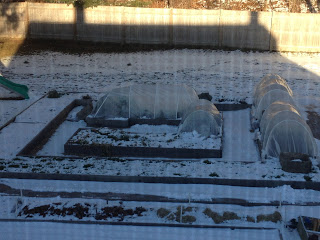Seed Starting Shelves

Last weekend we made an upgrade to our seed starting system. Last year , we had all of our seed flats on top of our window seat benches, but this wasn't exactly ideal when the kids wanted to get to their toys inside. So we decided to build some shelves in the windows of our four-season porch. The challenge was that we wanted them to be removable, since we only need them for three to four months of the year. Here's what we came up with: We got regular shelf brackets to screw into the (wide and sturdy) window frames. Instead of using the hardware that came with the brackets, we got some brass threaded inserts and new machine screws of the same size. The idea is that with the threaded inserts permanently in the window frames, we'll be able to screw and unscrew the brackets as often as we like without stripping out the wood. The shelf brackets also happened to come with plastic covers, which you can see above. They hide the hardware, and also are a bit soft...











